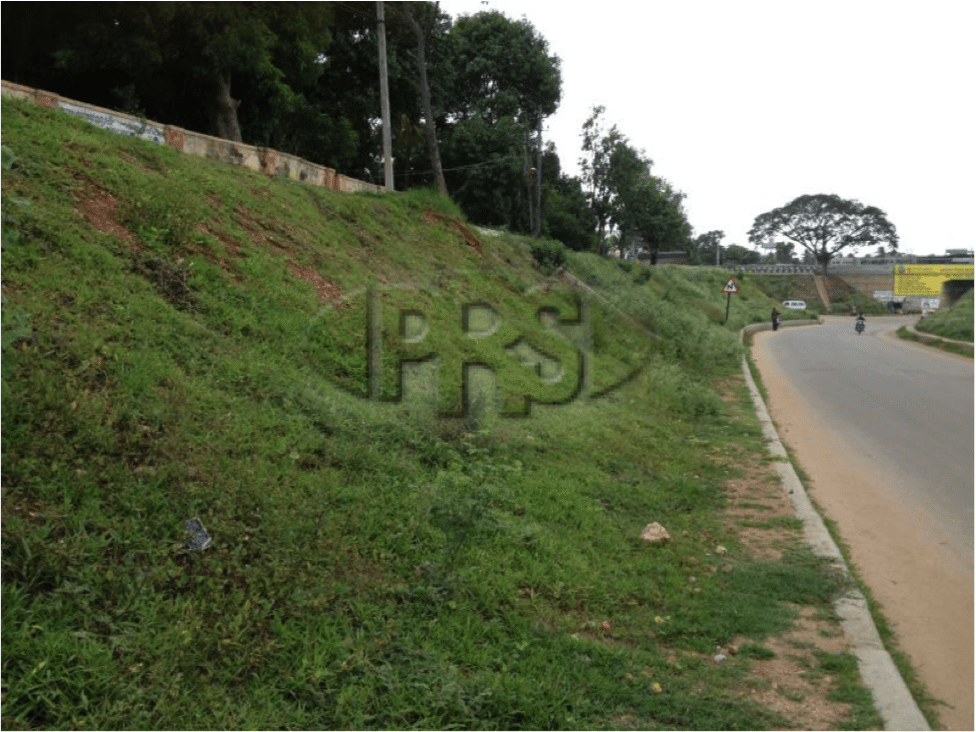Road Embankment Reinforcement on Steep Slopes
Neoloy®Tough-Cells were used to stabilize steep roadside slopes in National Highway 4, India, utilizing both local natural soil and local labor.


Challenge – A Biotechnical Stabilization Method for Steep Roadsides
Steep roadside slopes in sections of the Chitradurga-Harihar National Highway 4 in the state of Karnataka (part of the India National Highways Development Project Phase IV) required Geosynthetic Stabilized Embankments (GSE).
In addition to the relatively steep slopes (1:1.5), the soil of the site was comprised of hard rock soil. Measures were needed to protect the berms on the road embankments to ensure the stability of the road shoulders, prevent erosion of the slope and limit water on the road structure. A biotechnical stabilization method was required integrating a geosynthetic product, vegetation to stabilize the soil mass and a drainage system to guarantee the long-term integrity of the system.
A green sustainable solution was desired in addition to the soil stabilization since this area connects the city with the highway. Therefore, the visual landscape aesthetics were of paramount importance.
Gammon Infrastructure Projects LTD. Gammon (GIPL) was interested in a solution that was effective in terms of economics, engineering and environment.
Conventional Solution – Stone Pitching
Stone pitching would have been difficult to install due to the very hard soil and the steepness of the slopes. The hauling and placement would have entailed a large environmental footprint. Stone pitching is also more expensive, takes longer to install, is less effective in preventing soil erosion, and less effective in creating a green, natural landscape. Alternative coir blankets are difficult to anchor, subject to hydraulic forces and lack the tensile strength for long-term slope stabilization.
Neoloy Tough-Cells Solution
Neoloy Tough-Cells protect embankments from erosive forces by confining the topsoil infill and reducing the impact of rain and runoff. In addition, the Tough-Cells provide an ideal structure to promote vegetative growth for an additional ‘layer’ of soil stability through the root-soil interlock.
After evaluating the soil, geometry and loading, 660 7.5 cm high Neoloy Tough-Cells were installed on the slope. At the crest shoulder and toe Neoloy was embedded in the subgrade. Locally available topsoil was used for infill.
Drainage was enhanced by chutes at specific intervals comprised of Neoloy infilled with large gravel / small boulders (up to 100 mm) to improve down-slope stability against high water flow. A collecting drainage system was installed at the toe to prevent storm runoff on the road.
Grass was planted to prevent soil loss, as their root interlock forms a blanket against raindrops and running water, especially during heavy rains, and to green the roadsides. As part of the project’s sustainability, local women were employed to plant the grasses providing extra income for the local populace.
- Engineering performance – long-term. reliable protection
- Fast installation – finished within 2 months
- Sustainable – utilized local natural soil and local villagers for labor.
- Landscape aesthetics – grass greens the environment while providing effective soil erosion.
- Cost-effective – lower capital and life-cycle costs.